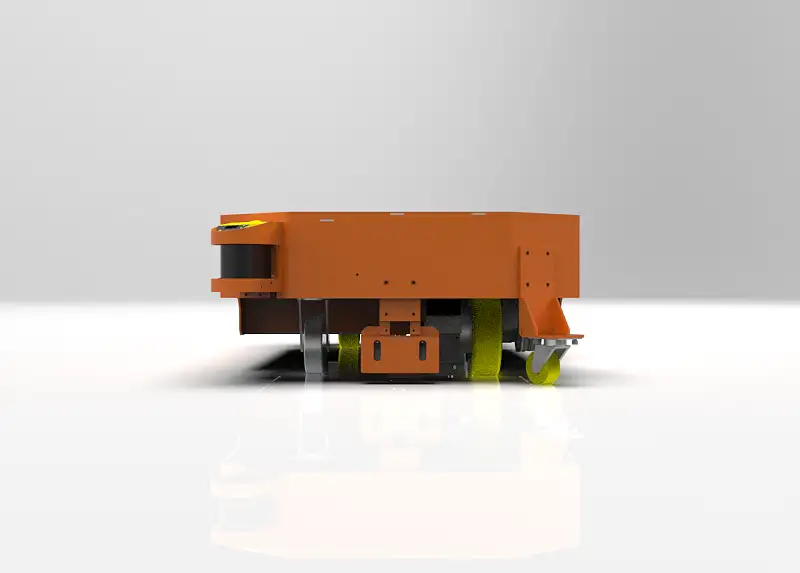With the continuous advancement and application of artificial intelligence (AI) technologies, Automated Guided Vehicles (AGVs) and Robotic Guided Vehicles (RGVs) have emerged as crucial components in the industrial and logistics sectors. This article explores the research on intelligent decision-making and control methods for AGV/RGV systems based on artificial intelligence, aiming to achieve more efficient and intelligent autonomous operations.
I. Challenges of Traditional Decision-Making and Control Methods
Traditional AGV/RGV decision-making and control methods often rely on rules and pre-existing knowledge, which pose several challenges. Firstly, manual rule design needs to address various complex scenarios and constraints, often resulting in incomplete coverage. Secondly, the application of pre-existing knowledge is limited by specific environments and struggles to adapt to real-time changes. Therefore, AI-based methods can overcome these limitations and achieve more intelligent decision-making and control.
II. Intelligent Decision-Making and Control Methods based on Artificial Intelligence
1. Reinforcement Learning
Reinforcement learning is a method that enables agents to learn optimal strategies through interactions with their environment. In the context of AGV/RGV systems, reinforcement learning can optimize the decision-making process by continuously learning and improving the optimal path or control strategy through trial and error. Reinforcement learning can overcome the limitations faced by traditional methods, particularly in handling complex scenarios and real-time constraints.
2. Deep Learning
Deep learning is a popular AI technology that has been widely applied, including in the field of decision-making and control. Through training and optimization of deep neural networks, deep learning enables automatic learning and abstraction of input data. In the context of AGV/RGV systems, deep learning techniques can be applied to perception and decision-making tasks, such as environment understanding through image recognition and object detection, enabling informed decision-making and control.
III. Research Progress and Challenges
1. Algorithmic Research Progress
Research on AI-based intelligent decision-making and control methods for AGV/RGV systems has made significant advancements both in academia and industrial applications. Researchers have proposed various algorithms based on reinforcement learning and deep learning, continuously improving decision-making and control effectiveness. These algorithms not only enhance the intelligence level of AGV/RGV systems but also adapt to different environments and task requirements.
2. Challenges and Solutions
However, AI-based intelligent decision-making and control methods for AGV/RGV systems still face challenges. Firstly, real-time performance and robustness of the algorithms need further improvement to ensure stable operation in complex environments. Secondly, the interpretability and explainability of the models are important concerns in industry and require efforts to address the black-box nature of AI algorithms, providing explanations and validation methods for decision-making processes.
IV. Future Perspectives
With the rapid development of AI technologies and increasing application requirements, AI-based intelligent decision-making and control methods for AGV/RGV systems will continue to evolve. Some future perspectives include:
1. Multi-modal Perception and Decision Fusion: Integrating various sensor technologies, such as LIDAR, cameras, and radars, with AI algorithms to achieve multi-modal perception and comprehensive decision fusion, enhancing decision-making accuracy and robustness.
2. Autonomous Learning and Transfer Learning: Incorporating autonomous learning and transfer learning concepts, allowing AGV/RGV systems to continuously learn from real-time operations and autonomously optimize decision-making and control strategies, achieving advanced levels of autonomy.
3. Collaboration and Cooperation: In industrial and logistics scenarios, AGV/RGV systems often require collaboration with other vehicles or robots. By implementing AI-based algorithms, collaborative decision-making and planning among vehicles can be improved, enhancing operational efficiency and safety.
4. Algorithm Explainability and Safety: Emphasizing algorithm explainability and safety to ensure the understanding and verification of decision-making processes. Additionally, strengthening system security and protection measures to prevent any unexpected risks associated with AI applications in AGV/RGV systems.
5. Data Sharing and Privacy Protection: Considering data sharing and privacy protection issues in AGV/RGV intelligent decision-making. Promoting the formulation of appropriate data sharing standards and privacy protection measures to facilitate data sharing and further algorithm development.
Conclusion:
AI-based intelligent decision-making and control methods for AGV/RGV systems are of great significance in achieving efficient and intelligent autonomous operations. Through continuous research and improvement, challenges can be addressed, and more advanced and effective algorithm models can be developed, driving the intelligent development of AGV/RGV systems. It is believed that in the near future, AI-based AGV/RGV systems will play increasingly essential roles in the industrial and logistics sectors, providing innovative solutions to improve production efficiency and transportation effectiveness.

